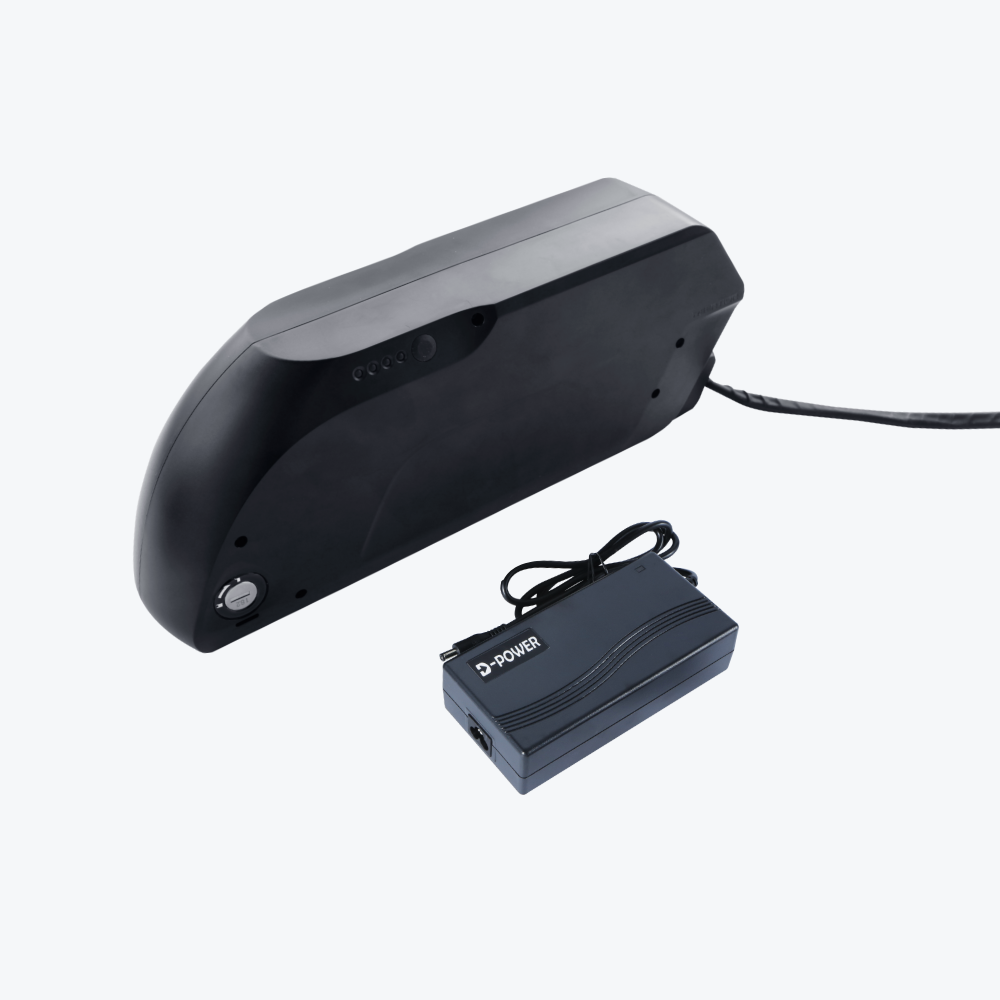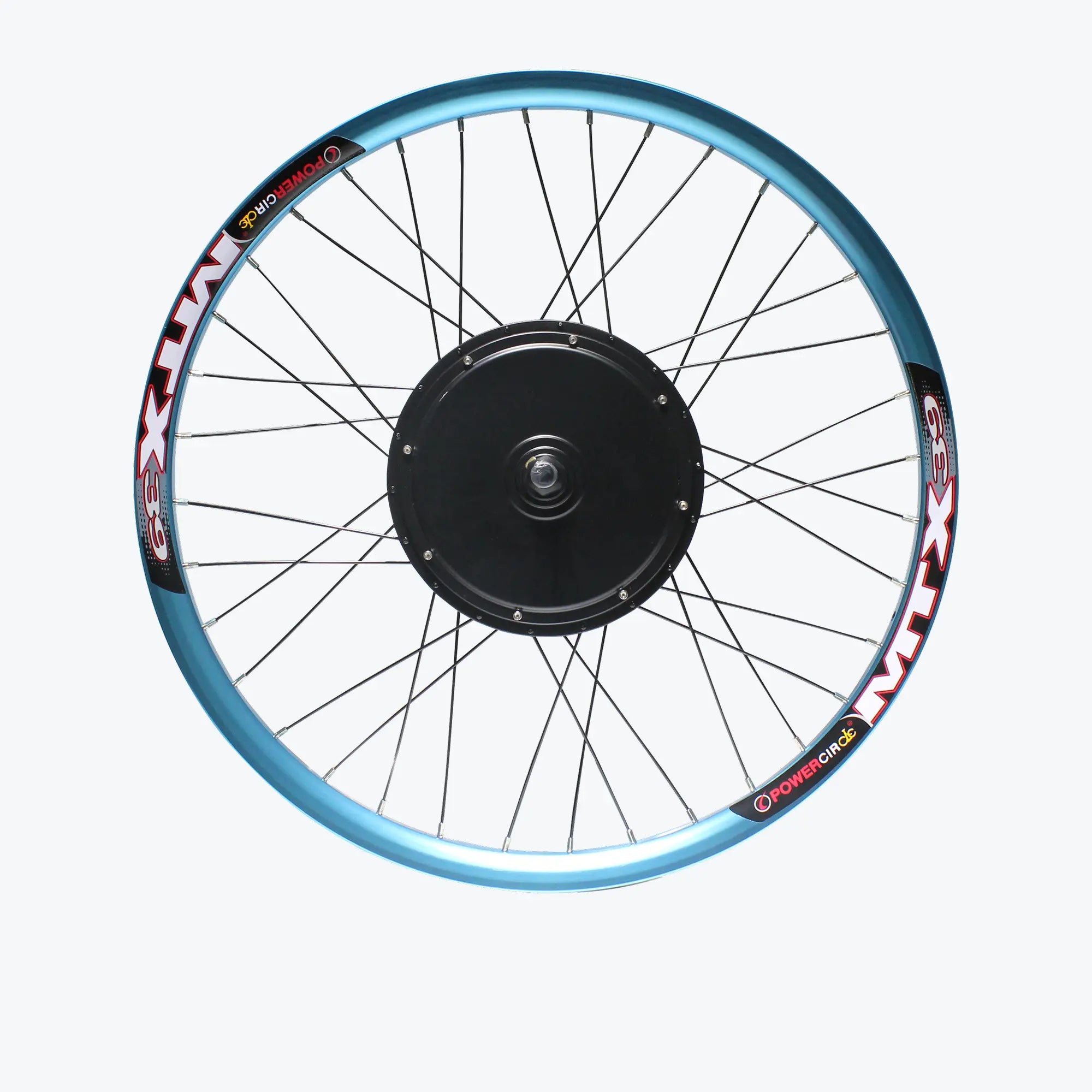In recent times, electric bikes (ebikes) have become increasingly popular, redefining the concept of cycling by allowing riders to achieve impressive speeds effortlessly. Many enthusiasts often wonder, "How Fast Do Electric Bikes Go?" This curiosity extends to specific queries such as 'how fast is 48v in mph' and 'how fast does a 1000w electric bike go?' The speed of an ebike is influenced by a variety of factors, including motor power, the rider's weight, and government regulations. Let's delve into the factors that determine the speed of your ebike.
Factors That Affect The Speed Of An Electric Bike
The speed of an ebike is influenced by a cumulation of several factors. These factors include:
1. Motor Power And Wattage
The motor power of your ebike has a direct impact on the speed of your ebike. As a result, The higher the rating of the ebike motor, the faster the ebike will move. Additionally, a higher power rating means that the bike can move weights easily. As a result, an ebike with 24 volts power rating will move faster than an ebike with 12 volts power rating.
In the same vein, your ebike battery influences the speed of your ebike. By implication, a strong battery will give you a faster-riding speed, while a weak battery will limit your speed significantly. Unfortunately, the range of your ebike battery could drop when it is charged repeatedly. This is because ions flow from the cathode to the anode each time you charge the battery. When the battery discharges, a reversal in flow occurs, causing charges to move from the anode to the cathode. Repeating this process causes the cathode to wear out, leading to a drop in the battery capacity. Consequently, this reduces the speed of the ebike.
The wattage and voltage of an electric bike's motor greatly determine its top speed. For instance, a 48v motor combined with different wattages can achieve varying speeds. A 500w motor might reach speeds around 20 mph, whereas a more powerful 1500w setup can approach 30 mph. The extreme power of a 3000w motor can propel an ebike up to 50 mph under ideal conditions. These examples illustrate typical speeds like how fast is 48v 1000w in mph, and how fast a 500w electric bike can go.
2. Weight Of The Bike and Rider
Heavier weights demand more energy from the ebike motor. Since the battery powers the ebike motor, it is affected by higher energy demand on the motor. Consequently, more battery is consumed by your ebike when you carry heavier weight. This causes your bike to move slower, and your battery gets depleted within a shorter time frame.
3. Tire Pressure and Terrain
Deflated or punctured tires would lead to a chain of situations that would cause the ebike to move slowly. The first on the chain is that the grip on the ground would not be so effective. Consequently, the motor will need to work harder for the bike to move. Additionally, the ebike battery will be affected, leading to faster battery drain and reduced ebike speed.
Riding on a smoother and easier terrain causes your ebike to move faster. One primary reason is that the pressure on the motor to overcome resistance is usually lower. As a result, your ebike will descend a hill faster than the ascension trip. Additionally, trips on paved roads will be faster than rides on gravel.
4. Pedal Assist Level
The pedal assist level of your ebike goes a long way in determining how fast you cycle. Depending on the speed you want, several ebikes allow you to set the extent of assistance you require. In other cases, the pedals have a sensor that detects your pedaling speed and supports you in achieving the maximum speed.
Average Speeds Of Electric Bikes
The average electric bike can go as fast as 20mph. However, the current maximum speed of ebikes is 28mph. The average speeds of ebikes are usually a function of the class under which the ebike falls.
There are three classes of ebikes: Class 1, Class 2, and Class 3 bikes.
For instance, how fast can an electric bike go generally depends on its class. Class 3 ebikes, which are often equipped with 750W motors, can reach speeds up to 28 mph. If you're wondering about the specifics, like 'how fast is 1600w 48v in mph,' such setups can exceed typical Class 3 speeds, depending on the jurisdiction and local regulations.
Class 1
A class 1 ebike is an electric bike whose electric motor is pedal-assisted. A class 1 ebike has no throttle and can cover a maximum speed of 20mph. Despite the limitation in the speed of the class 1 ebike, owning a class 1 ebike gives you more liberality than ebikes in other classes. This is because you can ride a class 1 ebike to places the other classes of ebikes won't be permitted. Additionally, you would not need a license or insurance to use a class 1 bike.
Class 2
Class 2 ebikes are the most popular in the ebike market. They have the same maximum speed as the class 1 bike. However, the electric motor of a class 2 ebike is throttle activated. Additionally, most bikes in this class come with throttle and pedal assist functions. Usually, the throttle is found in the handlebars of the ebike.
Class 3
Class 3 bikes are the fastest and most expensive type of ebikes. The speed ebikes in this class make the investment worth it. Most class 3 ebikes come with a throttle and pedal assist. They have an electric motor of 750 W and can go as fast as 28mph. Due to this speed, class 3 ebikes are restricted to riders above 17 years old. Before purchasing a class 3 ebike, check with your state's regulations to know if it is legally accepted.
Legal Speed Limits For Electric Bikes
Different countries and nations have different definitions of electric bikes and the permitted ebike speed limit. You may be familiar with some of them, but we will examine the definitions and speed limits in this segment.
In the United States, the legal limit is generally 20 mph for ebikes with motor power not exceeding 750W. However, people often ask about specific configurations like 'how fast is 48v 2000w in mph' or 'how fast is a 48v 1000w ebike.' While these configurations can technically exceed 30 mph, they must be throttled back to comply with local laws.
1. The United States Of America
In the US, an electric bike is a two or three-wheeled vehicle having fully operable pedals and an electric motor of less than 750 Watts. The maximum permitted motor speed when ridden by a rider on a paved surface is 20mph.
2. Australia
The Australian government considers the ebike as any bicycle with an auxiliary motor having a maximum power output of 250 W or less. At the moment, there is no specified speed limit.
3. United Kingdom
According to the standards of the United Kingdom, an electric bike must have pedals to propel it. The bike should have a maximum power of 250 watts, and its motor should stop propelling it once it reaches the 15.5mph speed limit. Any ebike in the United Kingdom should show either the power output or the manufacturer of the motor. Additionally, it should display either the battery’s voltage or the maximum ebike speed.
4. Canada
Canadian law defines an electric bike as a Two- or three-wheeled bicycle equipped with handlebars and operable pedals. The bike has a 500 W power rating or less electric motor and a maximum motor assisted speed of 32 km/h on level ground.
5. Europe
In Europe, an electric bike is defined as a bicycle equipped with a motor having a continuous power rating that does not exceed 250 W. The maximum permissible speed for bicycles in this category is 25km/h or 15.5mph.
Safety Considerations For Riding Electric Bikes At High Speeds
Every ebike comes with a manufacturer-recommended speed limit. Unfortunately, several riders never adhere to it. Exceeding the recommended ebike limits puts you at risk of losing your bike and your life. Sometimes, despite following the traffic rules and manufacturer recommendations, accidents occur. You could minimize the sustained injuries in such situations by wearing protective clothing and following the counsel in this section
1. Always Use An Helmet:
Helmets are not assurance that you’d be unhurt if you have a fall. But it is essential to use them because they’d limit the impact of such falls and could save your life.
2. Protect Yourself From The Elements
Check out the weather forecast before your trips and protect yourself appropriately. On sunny days, ensure you use your screen and sunglasses. On cold days, dress in layers and use waterproof layers for important items with you.
3. Be Alert
While riding, avoid loud music and things that could distract you. Always ensure you are in the moment and alert to take precautionary riding moves if and when the need arises.
4. Wear Reflective And Colourful Materials
Several biking accidents are caused by the inability of vehicle drivers to see cyclers on the road. To protect yourself from such occurrences, you must dress in clothing that will make you obvious.
5. Keep Your Hands On The Bike
Regardless of your biking professionality, always keep your hands on the handlebars for balance. You particularly need this when sharing the road with other road users. If your hands are not on the bike, taking the right safety measures would be difficult when unforeseen circumstances arise.
6. Know And Follow The Road Rules
Several bike accidents could be avoided if cyclists follow road rules. Ensure you follow the road rules strictly, most especially at intersections. Ride as though you were driving a car, follow the road signs and desist from riding against traffic. Following road rules will guarantee your safety while riding.
7. Watchout For Road Hazards
Be on the lookout for road hazards like ice, snow, loose gravel, puddles, and bumps. While approaching them, it is best to slow down. Running through them could lead to an imbalance that could throw you off the bike.
Conclusion
As we've seen, the speed of an electric bike can range significantly based on factors like motor wattage and voltage. Questions like 'how fast does a 3000w electric bike go' or 'how fast is 1000w 48v in mph' reveal that ebike performance can vary widely. Regardless of your ebike's capability, always prioritize safety and adhere to local regulations.





























1 comment
Joseph Dunham
Trek 27in wheel 500w 48 volt how far and how fast can it go all advice welcome
Trek 27in wheel 500w 48 volt how far and how fast can it go all advice welcome